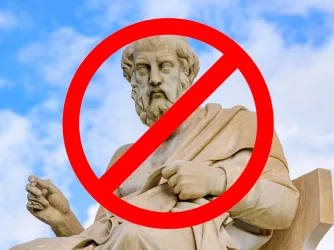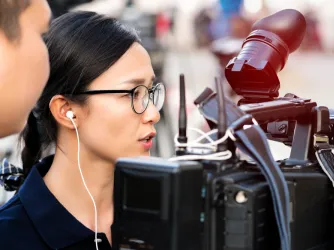Table of Contents
The ‘Twitter Files’ have opened the company's censorship decisions to public scrutiny

Phil Pasquini / Shutterstock.com
New Twitter owner Elon Musk is rocking the worlds of both politics and the internet with the release of what he calls the “Twitter Files,” exposing the internal workings of how the social media platform decided what speech was acceptable — and just how acceptable — under prior management.
Releases to independent journalists Matt Taibbi (here and here), Bari Weiss (here and here), and Michael Shellenberger (here) exposed what many have long suspected: Twitter’s “trust and safety” team was far from an objective referee of the company’s stated rules. Instead, Twitter relied on politics, prejudice, and cronyism in how it would treat both fact and opinion, with the shadow of federal law enforcement looming nearby.
Partisans of the old Twitter regime frequently reminded dissenters that it is a private company and can do what it wants. With mocking glee, partisans of Twitter 2.0 now say the same. From a legal perspective, they’re both right. Concentrated control of media outlets is, likewise, nothing new. So why does social media censorship strike so many people as creepier and more deceptive than prior efforts to control information?
What is new about social media versus older forms of communication is that it does more than just enable those who control the network to introduce bias into the information people receive. It allows them to forcibly alter the nature of the public conversation itself by algorithmically controlling the reach, spread, and presentation of other people’s speech in invisible and — conveniently — deniable ways.
Take the practice of shadowbanning.
While Twitter denies that tweets were made impossible to find, what distinguishes social media from blogs or newspapers is that users need not hunt down updates from those they follow. Instead, tweets from followed accounts appear in a feed, and perhaps on the trending list if they are popular. But those following users like conservative activist Charlie Kirk or Stanford’s Dr. Jay Bhattacharya would be far less likely to see their updates, if they saw them at all. Talk show host Dan Bongino’s tweets were even removed from users’ searches.

Twitter’s new era continues to stir debate around online free speech
Musk tweeted Monday that Apple threatened to remove Twitter from Apple’s App Store with no explanation.
As a result, speakers were unknowingly shouting into the void. Listeners didn’t even know this was happening. And neither side was told why or how it happened.
There’s no doubt Twitter was communicating messages of approval and disapproval of political and social positions, which it has the right to do. But very little of this message was explicitly communicated as the company’s own speech.
Instead, the social media company relied on two methods practically designed to be maximally corrosive. First, it deliberately impoverished public discourse by eliminating the ability of users — most notably, then-President Trump — to speak on its platform. While it pretended to be following policies, in reality, emotion completely overrode judgment, with members of one enforcement team convincing themselves by Jan. 8, 2021, that Trump was equivalent to “the leader of a terrorist group responsible for violence/deaths comparable to Christchurch shooter or Hitler and on that basis and on the totality of his Tweets, he should be de-platformed.”
In this atmosphere of internal moral panic, Twitter booted the sitting president of the United States, ignoring both its own rules and its own recognition that censoring heads of state is bad policy. It also set up a flagrant double standard. When Ethiopian Prime Minister Abiy Ahmed literally called for people to take up arms against a region of his own country, Twitter purposely kept his tweet accessible, and for good reason: People should know what world leaders are saying.
The moral hazard of controlling such tools is immense, and Twitter had neither the wisdom nor the character to resist abusing its power over a popular means of communication.
Second, Twitter deployed its users as unknowing cat’s paws to promote the company’s own message through amplifying tweets and users with whom it agreed and throttling those it disfavored. Was someone’s tweet actually popular, or was it just Twitter’s heavy thumb on the scale? This let Twitter invisibly borrow the perceived credibility of independent voices to send its corporate messages. Those likely to dismiss corporate messages as self-serving and profit-driven are much less likely to engage their skepticism when the same message is artificially pushed forward as the voice of the people.
The moral hazard of controlling such tools is immense, and Twitter had neither the wisdom nor the character to resist abusing its power over a popular means of communication. From not knowing that “kraken” was not just a bannable “Stop the Steal” buzzword but a prominent cryptocurrency exchange — whoops! — to deciding whether to censor the sitting U.S. president based on a quick Google search, the Twitter Files show nothing more clearly than that those given great power did not exercise great responsibility.
Even less excusable is the murky involvement of federal agencies in this decision-making. For instance, Twitter Trust and Safety head Yoel Roth wrote, with regard to his shared calendar entries, that they had “reached a certain point where my meetings [with government agencies] became . . . very interesting . . . to people and there weren’t meeting names generic enough to cover.”
One can imagine Twitter having legitimate meetings with the FBI and Homeland Security about, say, child pornography or terrorist communication. But nobody hides that kind of meeting on their calendar. The very fact that these agencies were willing to conduct meetings so questionable that Twitter bosses felt the need to disguise them from fellow employees displays a staggering level of incompetence, corruption, or a nasty combination of both, on the part of the agencies and the platform.
It also makes the fact that Twitter Deputy General Counsel Jim Baker was secretly vetting the first installment of the Twitter Files without Musk’s knowledge — for which he was fired last Tuesday — all the more alarming, considering Baker’s immediate prior job was as general counsel of the FBI.
It’s only because the idiosyncratic Musk bought Twitter, which he calls a “company and a crime scene,” that these secrets are being exposed. There is every reason to suspect similar things are afoot at other giants like Meta and Google.
It’s too early to tell what Musk will make of Twitter, but he has done a public service by opening up the company’s vast censorship regime to public scrutiny.
Robert Shibley is a FIRE Senior Fellow and is Of Counsel at the law firm of Allen Harris PLLC. The opinions expressed here are his own.
Recent Articles
Get the latest free speech news and analysis from FIRE.

Can the Pentagon strip Mark Kelly’s rank over speech?

Texas A&M to philosophy professor: Nix Plato or be reassigned

Morgan State says cut the cameras, stop the presses


